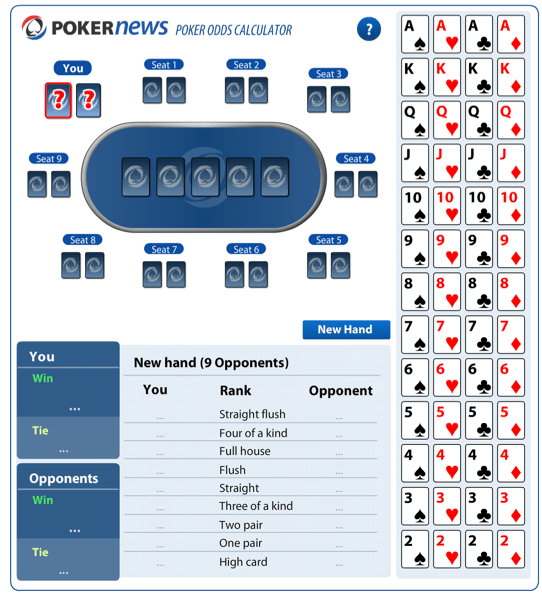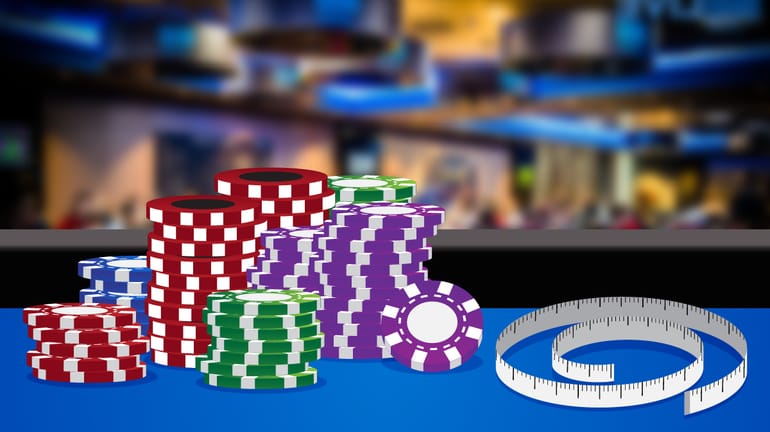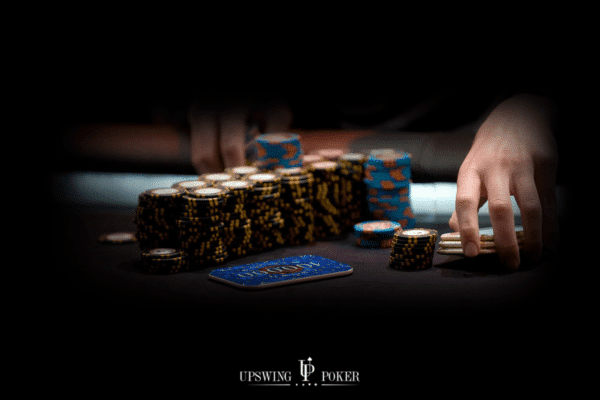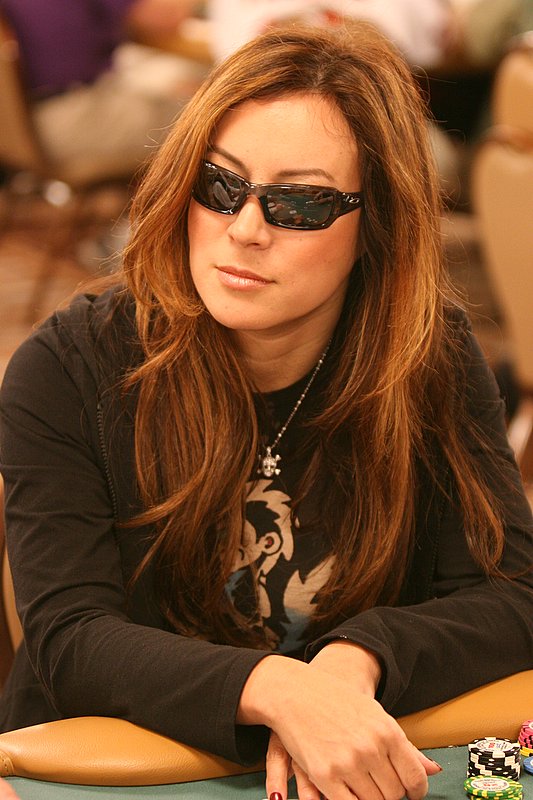All In Calculator Poker
Try our free online poker odds calculator for texas hold em, omaha and omaha hi/lo. Calculate the percentage odds for your hand vs up to 4 other hands. Analyse the results, save your calculations and become a better poker player! The Poker Hand Range Calculator calculates Texas Hold'em hand ranges from percentage values and vice-versa. All this online and free. Setup a poker range by selecting the hands in the poker hand calculator and share the link which is automatically generated for you.

Combonator is not your average equity calculator. Instead of having to select one range then click calculate to wait for answers, Combonator allows you to quickly select and divide a hand range into one or more groups using manual and automatic selections.
To increase accuracy of calculation, All-in Equity ignores certain situations that PokerTracker 3 included in All-in EV calculations, this makes All-in Equity a more precise measurement of luck. For more reading on the subject, here is an article written by Jeff Hwang on the topic of All-in EV which originally appeared in Card Player Magazine.
See equities, combination counts, and hand value breakdowns: instantly. Combonator will help you learn flop textures, how ranges split up on boards, how equities shift on turn and river cards. Join thousands of poker players using Combonator to learn and improve their Hold'em strategy.
Get started in three easy steps:
- To increase accuracy of calculation, All-in Equity ignores certain situations that PokerTracker 3 included in All-in EV calculations, this makes All-in Equity a more precise measurement of luck. For more reading on the subject, here is an article written by Jeff Hwang on the topic of All-in EV which originally appeared in Card Player Magazine.
- Having enough chips to cover all eventualities is crucial, which is why it's a good idea to use a calculator. Just as you'd use a poker calculator to better understand your odds in a given hand.
First, we start with a preflop range.
Get started by selecting a preflop range for the scenario you are analyzing. Custom rankings, saved ranges, and advanced selections means it only takes a couple of seconds to get started.
Then, we can assign this range into groups.
Add in the board, then you can assign this preflop range into one or more colored groups. This can be done manually in the hand grid or with the extensive auto-selection tools available.
No waiting around. Get results instantly.
Get output for an individual group, or all groups: combination counts, equities against hero's hand, and hand values in the range. Data updates instantly as you work! No calculate buttons, no waiting. Explore ranges and scenarios organically and intuitively.
Below find all the rules for all-in situations in poker, how to handle exposed cards in cash games and tournaments plus try our free side pot calculator to help sort everything out.Poker Side Pot Calculator - Free Poker Tool
This tool lets you check who wins what when several players are all in. Your home game or private tourney won't have any more fist fights now. Enjoy!

Type in the stacks of the participating players and click on calculate. Click 'instructions' for, um, more instructions.
Rules for All-In Situations in Poker

The 'all in' rules we abide by in poker today were invented to prevent über-rich mobsters from running over small, honest guys at the poker table.
Before the all-in rule was invented if you had $500 at the table and $10,000 in the bank, if an opponent bet $20,000 into the pot you could not call him -- even if you ran across the street and withdrew all your money from the bank. Even if you had the absolute nuts!
To avoid people betting their cars and farms and wives (or husbands), some humanist genius introduced a rule called 'table stakes.'
It states that in a poker hand you can only bet whatever money and chips you had on the table when the hand started. You cannot reach for your wallet and get more money. You cannot go to the bank and mortgage your condo.
To handle the case where one player bets all his money and the opponent has less money at the table, the all-in rules were introduced. We'll walk you through them.
Betting in All-In Situations
Typically, if a player goes all-in for less than half the amount of a full raise, his bet is considered to have no effect on the betting options. That is to say, if a player bets $100, another player goes all-in for $125 and a third player calls, the original player could not now re-raise as this would be in effect raising himself.
The third player, on the other hand, could still raise instead of call as he has not yet had the option to raise.
Calling an All In is Always Allowed!
All In Calculator Poker Games
No matter how little you have in your stack you can always call with the rest of your chips. When you call with all your remaining chips, you call 'all in.'
All-In Example with 2 Players:
There's $200 in the pot. You have $50 left and your opponent bets $200. If you want to call, you call all in by placing your last $50 in the pot.
In this case the opponent first gets $150 back - the amount you couldn't match. Then there is a showdown and the player who shows down the best hand picks up $300 - the $200 originally in the pot plus $50 from each of you.
So you can always call -- but you can only win as much from your opponent as your stack dictates.
How to Calculate Poker Side Pots
All-in rules for two players are pretty straightforward, as we saw above. When three or more players are involved, things can get pretty messy with one main pot and several side pots -- especially if you're in a home game and have to balance a beer jug while doing the math.
RULE: The ruling principle is that each player matches as much of the opponents' bets as she has left in her stack.
METHOD: This is how you do it. First, the smallest stack matches all opponents' bets. These chips are put in the 'main pot.'
Then the second smallest stack matches the remaining opponents' bets with whatever is left in his stack and creates a side pot. And so on.
Side Pot Example
There are three players with stacks as follows:

- Player A: $10
- Player B: $50
- Player C: $200
All players move all in. Let's start with the smallest stack and create the main pot. Player A has $10 and matches $10 each of the other player's bets. A main pot of $30 is created. This is the money that Player A can win.
The remaining chips of Player B are then matched to the bet of Player C. Player B has $40 left so we take $40 from Player C and make a side pot of $80.
When all matching is done Player C still has $150 left in his bet. This money is returned to Player C immediately. Then the remaining cards are dealt and the showdown is performed. The following pots are contested:
- Main pot: $30, contested by Players A, B and C
- Side pot: $80, contested by Players B and C
Tip: Go ahead and check this out in the side pot calculator above!
Now if Player A has the best hand (s)he wins the $30 main pot. Then Players B and C compare their hands to see who wins the $80 side pot. If Player B or C has the best hand this player wins both the main pot and the side pot.
All In Rules when a Player's Stack is Less Than the Small Blind
If a player's stack is smaller than the amount of the small blind that player is automatically all-in in for the next hand they play, regardless of their position.
If the stack is bigger than the small blind but smaller than the big blind the player is all-in in any position other than the small blind (and can only survive if they fold their option).
The all-in player can then only win the amount of their stack and that same amount from any callers or blinds. If the player has less than the big blind they can only win chips equal to their stack, not the whole big blind.
Rebuying After an All In
In a rebuy tournament, if you go all-in and lose all your chips you can buy more chips if you are still within the prescribed rebuy period. If you do this you must do so immediately. You cannot leave the table and come back!
If you do not have the money on hand to rebuy you're out of luck unless you can borrow from someone else at the table, buy the chips, then go get money to repay him or her.
Rules for Exposed Cards in Poker
In most card rooms exposing cards to reduce or encourage action, especially in a tournament, is not allowed. Most card rooms and tournament directors agree that unrestricted showing of cards is unacceptable and that if a player exposes his cards to one person, he must expose them to everybody.
After that though, things get a bit hazy.
The 'Show One, Show All' Rule
A common refrain among poker players who have seen someone show his hand to another player (who presumably has folded) is 'show one, show all.'
This clearly means that since the player has given information to one opponent, all opponents are entitled to the same information.
However, in recent years, this rule has been interpreted to mean 'show one, show both,' meaning if a player exposes one of his cards after the hand is over, the players are entitled to see the other card. In some card rooms the dealer is then required to turn over the other card.
Response to the 'Show One, Show Both' Rule
This rule has been met with nearly universal disdain from card players. Poker professional Daniel Negreanu is particularly outspoken about his opposition to this rule.
The rule discourages players from showing a single card to confuse their opponents and most agree that psychology and deception is very much a part of poker. Still, this may be the rule in the poker room you play in so you should find out before trying to expose one card.
Exposing a Card to Induce or Diminish Action
Another popular poker rule in card rooms is that you cannot show an opponent a card in order to induce a call or a fold. This rule is adhered to most commonly in tournaments since the actions of one player affect everyone at the table.
In the NBC Heads Up Poker Championship, though, players were permitted to expose a single card -- both because it made good television and because no one but the two players involved in the hand would be affected by the action.
Exposing Cards During All-In Situations
Providing there is not more than one player who still has more chips in his stack involved in the pot, there is no penalty for exposing cards once a player is all-in and called.
In tournaments, in fact, it is mandatory. However exposing a card while a player is considering whether to call an all-in usually merits a penalty.
Exposed Cards When Dealing
If you're dealing at home, if the first or second card you deal is exposed the hand is a misdeal. Any cards that have been dealt are collected and the deal starts over.
If any card after the 1st or 2nd is exposed then the deal continues. Once all cards have been distributed as normal the dealer takes the top card of the deck and gives it to the player who received the exposed card. The exposed card is then turned face up and shown to everyone at the table.
It's then put on the top of the deck and the dealer will use it as the first burn card when dealing the flop. If more than one card is exposed during the deal of the hand the whole hand is a misdeal and reshuffled to be dealt again.
Exposed Cards in the Shoe
If an exposed card (ie a face-up card) is in the deck while the dealer is dealing, the exposed card is simply shown to every player and taken out of play for that hand. The deal resumes as normal.
Poker Rules FAQs
Question: Once you've shown your cards, your hand is dead and you're considered folded out of the hand, correct?
Answer: This is a debated question and the rules vary depending on if you play tournaments or cash games. In cash games the general rule is that the hand is still alive even if the hole cards are exposed in the middle of a hand.
Poker Calculator 5 Card Omaha
One of the most cited set of poker rules available is 'Robert's Rules of Poker' created by poker expert Bob Ciaffone. Rule 12 in the General Poker Rules chapter states that 'A card that is flashed by a player will play.' Similar rules are found in other poker rules collections.
But tournaments are a different story. Here the general rule seem to be that exposed cards are considered dead. It's important to keep in mind that there are no universal poker rules per se and rulings can vary between card rooms and tournaments.
Always check the local rules before sitting down at the table.
-------------------------
Question: Do you need two decks of cards when the number of players is 7 or over?
Answer: No. In poker you use one deck of cards, end of story. After all, what would you do if a player flipped over five of a kind on the river? If the game you're playing is 7 Card Stud and you run out of cards, you deal the last card open for everyone to use.
Read more:
On the other hand, if you're playing Texas Holdem you could invite 20 players without running out of cards. This is probably one reason Holdem was invented in the first place - the railroad builders wanted all the guys to be part of the game.
-------------------------
Question: If there's a flush on the board can an off-suit card in the pocket serve as a kicker?
Answer: No. According to the poker rules, players can only use five cards to build their poker hand. Since a flush is made up of five cards, there's no room for any off-suit cards to influence it.
On the contrary, if there's a flush on the board, a card of the same suit in a players hand can give him or her a higher flush.
-------------------------
Question: Can you cash out some of your chips from the table and keep playing with the rest?
Answer: No. If you're playing in a cash game you're playing with all of your chips on the table. It's considered very poor etiquette to try and take any chips off the table ('go south') and it won't be allowed in any poker room.
Home games you can decide for yourselves but again it's considered poor form.

If you do want to cash out some of your chips but still get back in the game you have to cash out all of your chips and leave the table for an extended amount of time before returning.
This is called 'recycling' and while it's generally not encouraged it's not as bad. The wait time differs from poker room to poker room but expect to have to sit out an hour at least.
-------------------------
Question: Can you buy more chops off another player at the table?
Answer: Another bad idea. If you buy your chips off another player you cut down on the overall amount of chips at the table. The same amount of chips the first player had is now divided into two players.
Chips should only be bought from the cashier or the dealer. If you're player at home it's also a good idea to designate one player as the sole recipient of cash and distributor of chips.
-------------------------
Question: If you put one chip larger than the size of the pot in, is it a raise or a call?
Answer: Very common question. If you put one over-value chip into the pot without saying anything (at least in a standard casino poker room), it is always a call.
In a home game you can always decide if you want to ask the player if it's a raise but elsewhere if there is no verbal declaration of a raise it is considered a call and the difference between the call size and the chip value is returned to the player.
More Poker Games Rules
Poker Tools: